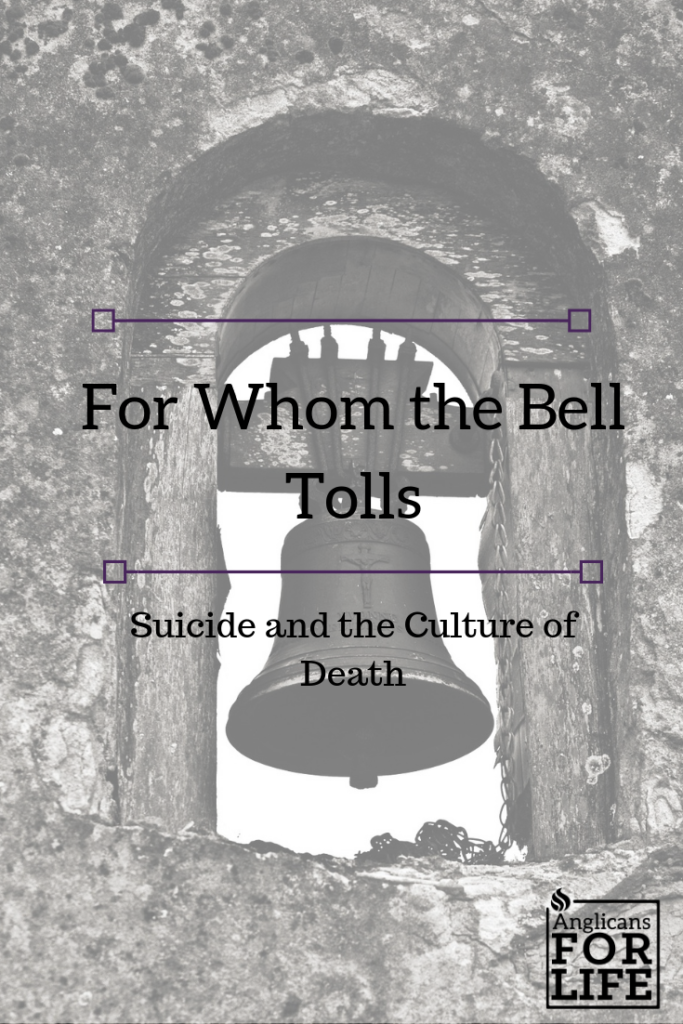
“No man is an island entire of itself; every man is a piece of the continent, a part of the main…any man’s death diminishes me, because I am involved in mankind. And therefore never send to know for whom the bell tolls; it tolls for thee.”
Anglican poet John Donne wrote these famous words in 1624. He had just recovered from a serious illness and, having been close to death, was inspired to write his Devotions upon Emergent Occasions. It featured 23 devotions, one writing for each day of his illness. This is from his 17th devotion and is really the only one to remain in public consciousness, likely due to the universality of his musings. We have all wondered about our place in the world, how our death or absence would impact friends, neighbors, and loved ones. Are we all lonely individuals, bobbing along in a sea of other lonely individuals, or are we all connected in some way? Donne’s feelings on the matter are clear. The loss of one life isn’t just a meaningless incident—it matters because we are human, and we are united by our humanity. You shouldn’t need to send someone to find out for whom the church bell (at this time of history commonly rung at funerals) is ringing, because the loss of one life is a loss to you as well.
How foreign, then, would our culture’s obsession with individualism, moral relativism, and pragmatism be to Donne. In a world more interconnected than ever before—through technology, media, and travel—studies have increasingly shown that people (in western cultures) are paradoxically lonelier than those in previous generations. According to the 2018 Loneliness Index, 46% of Americans report feeling lonely sometimes or always, and people ages 18-22 scored a loneliness rate of 48.3 out of 80, making them the loneliest generation. People, at even younger and younger ages, are feeling less connected—and more like an island entire of itself—than ever before.
As Christians, we know the truth—that we are connected through our shared nature as God’s creation, made in His Image. But in a world that is increasingly rejecting Him and His teachings, this epidemic of loneliness, combined with the deep-seated need for human connectedness, is spawning a growing, horrific problem—suicide contagion.
According to the US Department of Health and Human Services, suicide contagion “is the exposure to suicide or suicidal behaviors within one’s family, one’s peer group, or through media reports…Direct and indirect exposure to suicidal behavior has been shown to precede an increase in suicidal behavior in persons at risk for suicide, especially in adolescents and young adults.” If this sounds like a scare tactic or an over-exaggerated concern, consider that when Marilyn Monroe died in August 1962, which was followed by months of news coverage, there was a large increase in suicide numbers, a jump of 12% compared to the same month the previous year. This has become enough of a recognized problem that the National Institute of Mental Health has actually published recommendations for reporting on suicide, indicating that descriptions of the suicide method, dramatic headlines or graphic images, and extensive coverage of the suicide sensationalizes and even glamorizes the death—thus potentially influencing others to take their own lives.
This, of course, begs the question—is there a connection between increasing suicide numbers and the legalization of assisted suicide and euthanasia? Proponents of euthanasia and assisted suicide will scoff at this question, but the numbers tell us differently. Using Oregon, which legalized assisted suicide in 1997, as a sample, the trend is clear and worrisome. In 2000, Oregon’s conventional suicide rate was “increasing significantly”. By 2007, Oregon’s conventional suicide rate was 35% above the national average, and by 2014 it was 43% higher than the national average. Suicide is now the second leading cause of death among 15-34-year-olds in Oregon and the 8th leading cause of death among all ages. Are there other factors that have a direct causational impact on the rise in suicide rates? Of course. Nothing exists in a vacuum. The previously mentioned moral relativism and feelings of loneliness no doubt contribute a great deal to suicide ideation. But if the National Institution of Mental Health will acknowledge the connection between suicides and reporting on suicide, as well as that suicide contagion is a real phenomenon, why on earth aren’t we acknowledging that the devaluation of life somewhere, even those at the end of life, is a devaluation of life everywhere?
If that is not enough, a recent story in the Netherlands should make us all pause. Seventeen-year-old Noa Pothoven, after struggling for years with the trauma of previous sexual assault and rape, as well as extreme anorexia, requested legal euthanasia. While her request to die through assisted means was denied, due to her young age and by the fact that counseling could bring her some relief, Noa decided to starve herself, and her parents and doctors chose to not intervene. Her story is a tragedy in the deepest meaning of the word—for her friends, her family, and all the lives her death will impact. But it should not surprise us, because suicides, whether done legally or illegally, just bequeath more suicides. Noa’s homeland of the Netherlands, which has infamously liberal euthanasia laws, has now seen suicide rates jump astronomically—a quarter of deaths in the Netherlands are “induced”, which includes murder, suicide, and euthanasia. Considering the number of murders in the Netherlands is low, this means that a massive part of the population is choosing to end their lives, legally or not. This completely contradicts the idea that legalized euthanasia and assisted suicide would decrease the number of suicides, which was suggested by proponents of legalized assisted suicide and euthanasia. In fact, a 2017 study by Dutch researchers discussed this rise and why it may be happening: “Seen more broadly, the option of euthanasia for psychiatric patients may contribute to a societal climate in which death is increasingly seen as a remedy for all forms of severe suffering.” No man is an island indeed–because when we look at death as an answer for our problems, the result won’t be a better life—it will just be more death.
More states and countries are considering passing legislation to legalize assisted suicide and euthanasia. They will feature stories of suffering people. They will claim that it will be regulated and rare. They will call it merciful and dignified. They will declare it a win for humanity.
But we can hear the bell tolling as we look at the increasing suicide numbers. We can hear it when people are denied care and instead are encouraged to end their lives. And we can hear it as the next generation increasingly sees life as pointless and expendable.
So do not ask for whom the bell tolls. It tolls for us all.
Written by AFL Administrator Robin Ferguson
